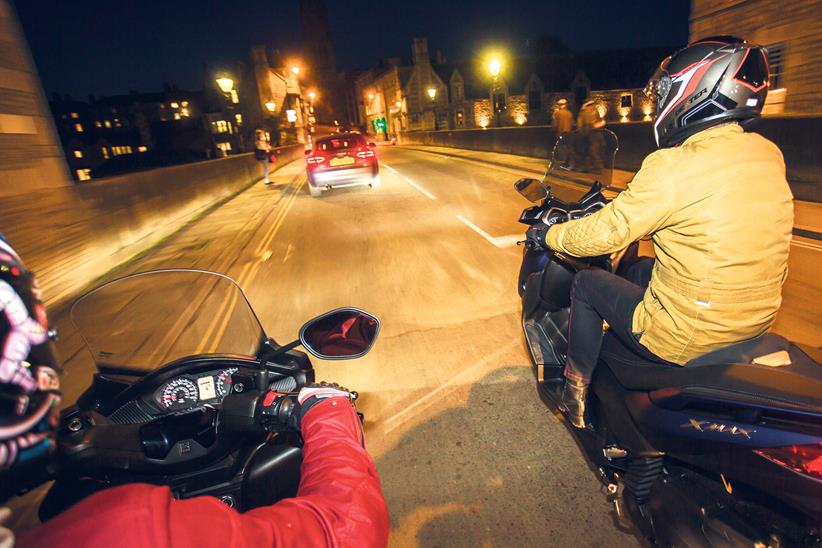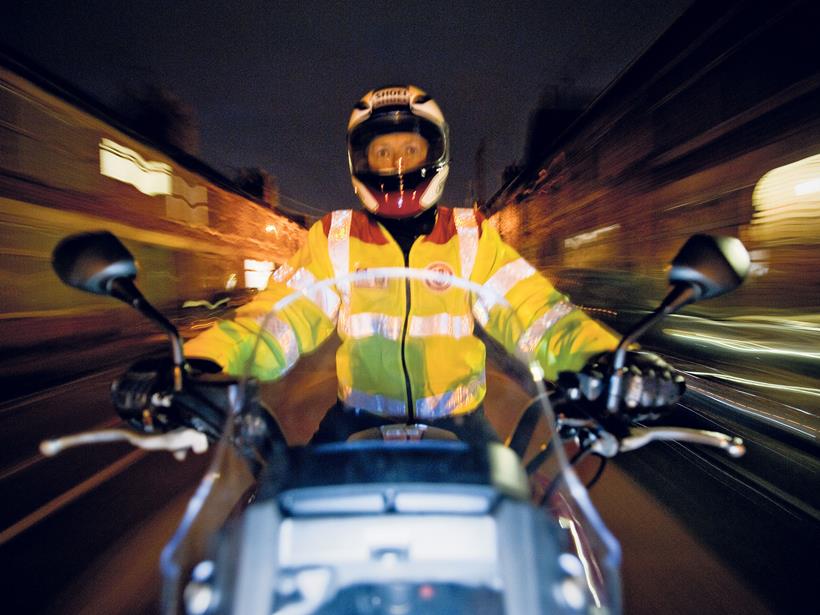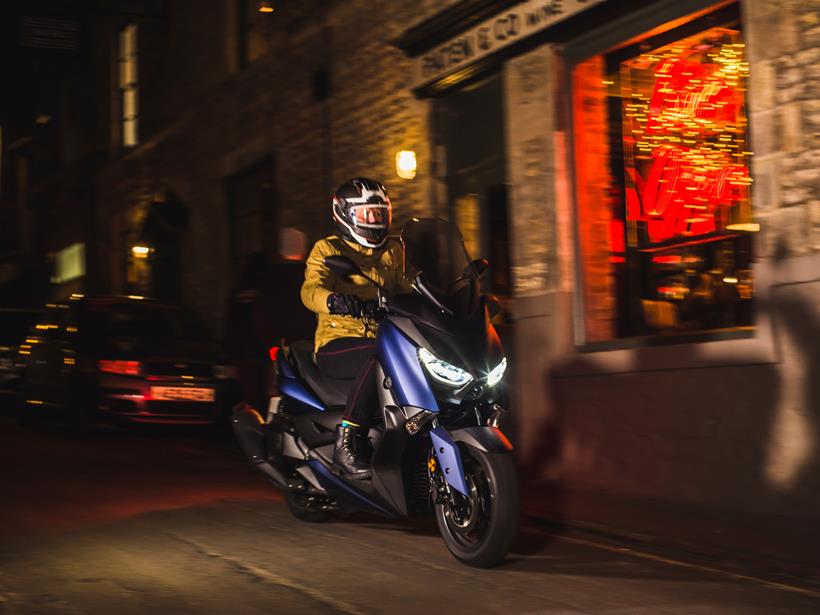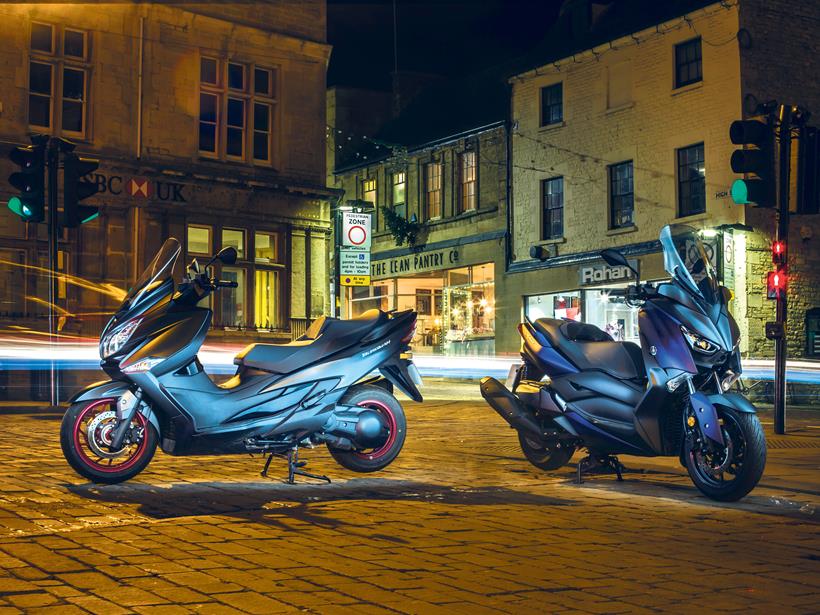Are you scared of the dark? Here's how I make sure I stay safe on my motorbike as the nights draw in

As the nights draw in for the winter, many of us will find ourselves riding in the dark more often and possibly for the first time in several months. Readjusting to night time riding (or navigating the dark for the first time) can take a while but once you get used to it, there’s no reason to be put off.
Riding a motorcycle at night can actually be very satisfying, in the summer the roads are less crowded, the air is cooler and more distractions are swallowed up in the dark. It’s less fun when the option is taken away from you by the calendar, though, with colder conditions, rain, oncoming headlights and even frost and black ice to contend with. It’s an important aspect of learning to ride that is often overlooked but with the right precautions and a bit of practice, you’ll be confident in no time.
Obviously, when the sun has gone down you can’t see the road ahead as clearly and so you need to make sure you leave more time to react to obstructions, potholes or anything else you might need to avoid. Cars also have increasingly bright headlights that can dazzle you as they approach. The job of seeing where you’re going gets even harder if it happens to be raining, too.
None of this should necessarily put you off riding in the dark, and if you fancy giving it a try, here are our top tips for how to ride a motorbike safely at night.
Plan your route
That twisty B-road you take home through the summer may not be the best choice when riding home in the dark. Stick to the routes with streetlights and cats eyes where possible (even if they’re boring). This will help with seeing where you’re going, but also they’ll be more likely to get gritted when the cold really bites.
Make sure you can you see clearly when riding at night

If you ride with a tinted visor in the day, you’ll need to swap it for a clear one at night. You also need to make sure it’s free from scratches and clean. Scratches will distort your vision at night, especially with oncoming headlights. This is also a problem if your visor is particularly dirty.
Make sure you carry a cloth and visor spray with you when you ride as it doesn’t take much to impact your vision at night. Petrol station paper towels are scratchy and will do your visor no good at all if you use them regularly.
If your visor is compatible with a Pinlock but you haven’t bothered all summer, it’s definitely worth investing in one for the winter months. A fogging visor is an added distraction you just don’t need when you’re contending with so many other factors and it’s a cheap, easy fix.
If you don’t have the option of a Pinlock there are plenty of anti-fog sprays to consider instead. You might also want to get yourself a water repellent because a visor full of rain can be a nightmare in oncoming headlights. There’s even small windscreen wipers like the BikerGuard available these days.
Use cat’s eyes to ride in the dark
Cat’s eyes are your friends: they help guide you at night and give you some indication of what is ahead.
They can not only indicate which way the road twists and turns but if it’s legal to overtake, as double white lines have a heavier concentration of cat’s eyes. Don’t forget that motorways have different coloured reflectors, red on the hard shoulder, amber on the outside lane and green on slip roads.
Wear reflective clothing

It still might not be perceived as being fashionable, but it’s important to be seen; fluorescent or reflective clothing really makes a difference.
Some riding kit has built in reflective strips – even gloves and boots, but we’d still advise a reflective vest or waistcoat especially if you ride regularly in the dark. A bright motorbike helmet will help too…
Motorcycle headlights can look like car headlights in the distance to an oncoming driver but they’re more likely to recognise a bike if the rider is visible too.
Keep your headlight clean
For obvious reasons, your headlight works better if it is clean. It might be a pain in winter but it’s worth doing before you set off on a night-time ride. Most garages have a simple sponge and bucket of water near the pumps – and don’t forget to clean your indicators and brake lights at the same time.
Even removing a seemingly minor layer of dried on road salt will make a big difference to your headlight’s ability to illuminate the road ahead so it’s well worth the few extra seconds it takes at a fuel stop.
You could also consider fitting some auxiliary spotlights if you’re a regular nighttime rider. These not only help to illuminate the way ahead, but make you easier to spot for other road users. They can be particularly helpful if your route takes you away from cats eyes and streetlights in rural areas.
Don’t look directly at car headlights

It’s difficult but try to avoid looking directly into oncoming headlights. Try to focus on your own side of the road and use your peripheral vision to keep an eye on the edge of the road to your left.
If you think oncoming headlights are on full beam, don’t flash back as you may dazzle them and cause momentary blindness; simply reduce your pace to a safe speed and avoid looking directly at the oncoming vehicle.
Look for extra clues when riding in the dark
It’s more difficult to spot potential danger at night so use all your senses to look out for clues. You can usually smell diesel before you can see it. If you can smell freshly cut grass or a recently fertilised field be aware of mud on the road or slow moving farm traffic.
If you’re riding on a smaller road you don’t know, you can use the rear lights of cars up ahead to get advanced warning of where the next bends are where they go.
That said, don’t be tempted tempted to ‘link the dots’. For example just because you can see a car in the distance it doesn’t mean the road is straight, there may be a hidden dip or turn. Always assume the worst, leave yourself plenty of time and ride to what you can see.

FAQs
-
Is it a good idea to ride a motorcycle at night as a new or beginner rider?
There's nothing stopping you from riding at night as a beginner motorcyclist and it's a great skill to develop for the future but we'd recommend gaining confidence in the daylight before you start riding in the dark. If you have to, take extra care and give yourself enough time to take action if you get things wrong. Some advanced motorcycle training deals specifically with the challenges of riding at night.
-
What do you wear on a motorcycle at night?
Your standard bike kit is fine to wear at night but it might be worth investing in some extra reflective gear if you ride at night a lot. Hi-viz vests or belts are readily available, but at the very least check your normal kit has reflective strips or panels built in. You'll also need a clear visor for your helmet.
-
How can I be more visible on my motorcycle at night?
Hi-viz kit is readily available and plenty of normal kit has reflective strips or panels built into it. Make sure your lights are all clean and working, including rear lights and indicators. Take your time and give drivers plenty of opportunity to see you, too.





